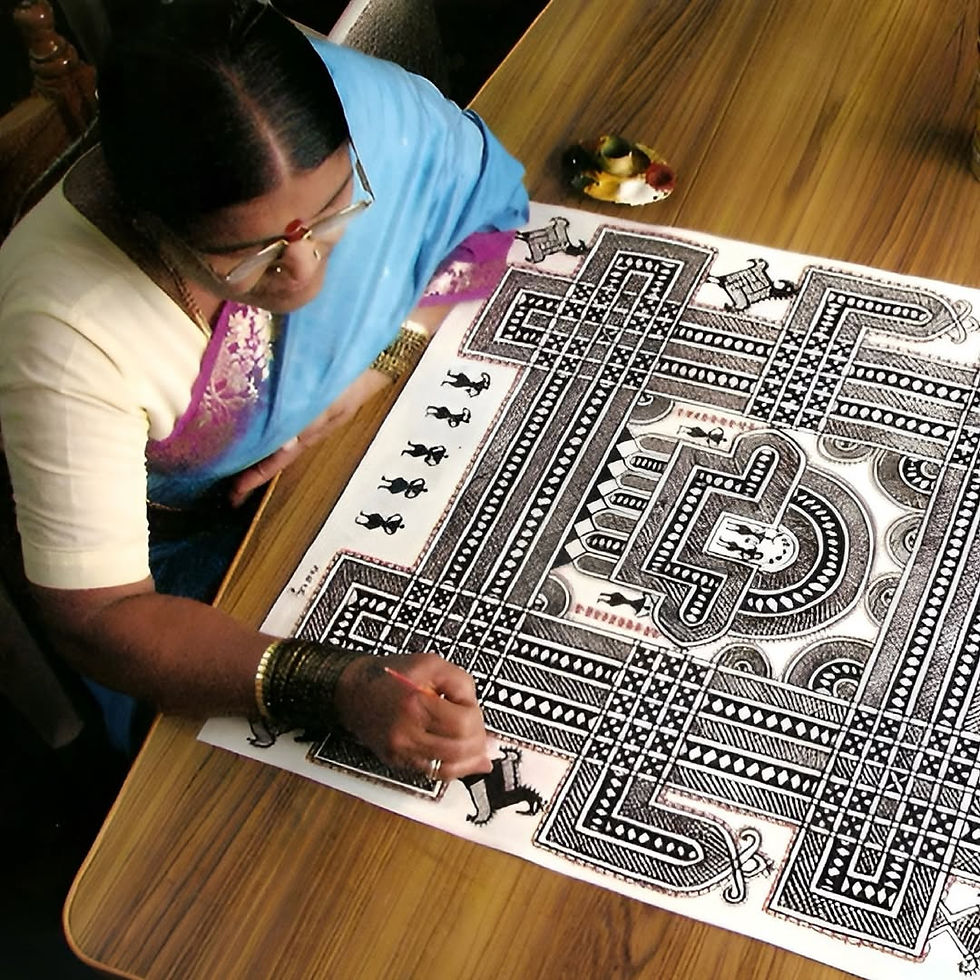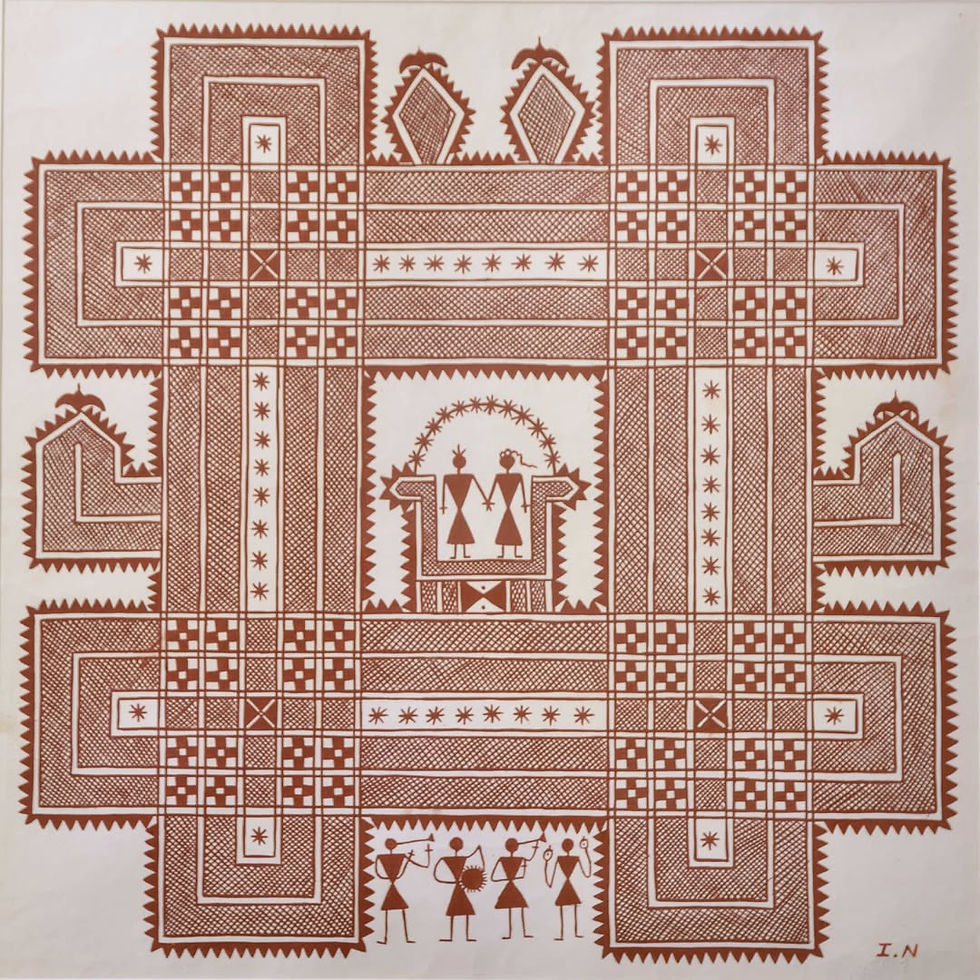Chittara Painting: Patterns of Culture and Craft
- The Accha Studio
- Sep 8
- 2 min read
Chittara painting is a traditional art form from the Malnad region of Karnataka that speaks in the language of geometry, rhythm, and symbolism. At first glance, what draws the eye is the meticulous use of lines, symmetry, and repeating patterns. Each painting is created with natural pigments prepared at home. Red earth, rice paste, and charcoal are transformed into striking shades of red, white, and black, giving Chittara its distinct visual identity.

The designs are drawn freehand, most often by women of the Deewaru community, using bamboo sticks or even their fingers. What might look like simple patterns at a distance reveals incredible precision on closer view. Triangles, squares, circles, and flowing borders come together to create a visual rhythm that feels both delicate and bold. These motifs are not chosen randomly but carry meaning. Flowers suggest growth and prosperity, birds often stand for freedom, and flowing lines can represent life’s cyclical nature. The balance of these forms mirrors the harmony that communities aspire to in daily life.
Culturally, Chittara paintings are not just art on walls but part of the fabric of rituals and celebrations. They appear during weddings, harvest festivals, and other significant occasions, marking homes with auspicious energy. The practice is deeply tied to memory and continuity, as mothers teach daughters the motifs and the stories hidden within them. In this way, Chittara has been sustained for generations, serving as a visual archive of the community’s way of life.

What also stands out is the way Chittara connects people with their natural environment. The choice of materials reflects resourcefulness and sustainability. The imagery itself often draws from the local landscape, turning everyday surroundings into patterns that live on in design. It is a reminder that art need not be separate from life, but can be woven into its very foundation.
In today’s context, Chittara paintings are admired for their aesthetic value and their cultural resonance. They are not just beautiful compositions, but living symbols of heritage, resilience, and creativity. For anyone interested in design, Chittara offers a rare example of how precision and storytelling can come together in one continuous flow of lines and colors.




Comments